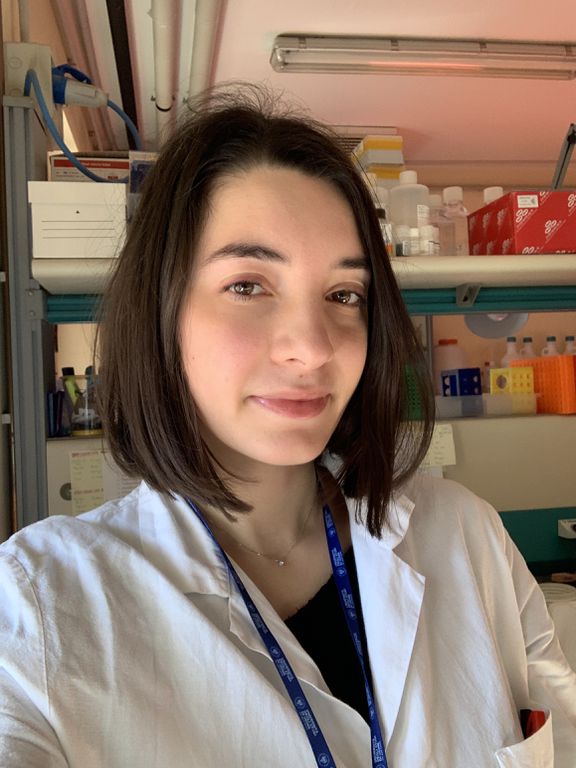

INFORMAZIONI SU
BELLINA Alessia
 |
Supervisore: Prof. Tell
|
| DNA and RNA can adopt several non-B forms, between which G-quadruplex (G4) and i-motif (iM). Even if several roles of these structures are already known, some aspects still lack characterization, such as the influence of non-B structures in the repair of abasic sites by the Base Excision Repair (BER). APE1 is the key enzyme of this pathway, as it is involved in the processing of abasic sites. While G4 repair pathway has been recently studied, the one regarding the iM has not been investigated yet. We propose a role of APE1 and hnRNP E1 in this process. Indeed, APE1 is a G4-binding protein able to repair modified G4 structures containing abasic sites, while hnRNP E1 preferentially binds cytosine rich sequences and has roles in secondary structures formation. This project will define whether the iM may affect the BER activity and whether hnRNP E1 could play any role in the DNA-repair process. This will open new perspectives for understanding the regulatory mechanisms responsible for genome stability of non-canonical DNA structures, such as those associated with the i-motif sequences at the telomeric regions that could have important biological relevance in cell senescence and in cancer development. Another interesting emerging subject is the role of RNA secondary structures in the miRNA maturation pathway. It has been shown by several studies that G4 has roles in the miRNA maturation pathway. Numerous precursors of miRNAs that are dysregulated upon APE1-depletion in cancer cells hold G-quadruplex forming sequences. APE1 is already known to be involved in the miRNA processing pathway. From these premises, we hypothesize a role of APE1 in the G4-dependent miRNA maturation pathway that will be the subject of the present project. Understanding the relevance of APE1 in the G4-mediated miRNA processing pathway will define a novel important role of the protein, that could be a relevant target for cancer treatment. |
|